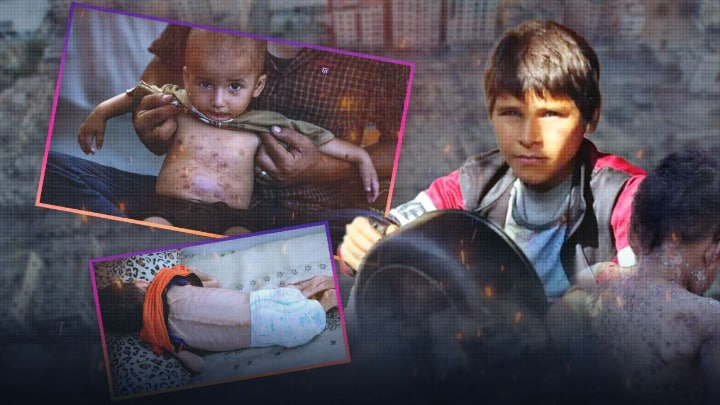Nothing to Eat, Nothing to Heal… Gaza Is Dying Slowly under a Crushing Siege
In the besieged Gaza Strip, people do not fall all at once—they die slowly under the weight of hunger, disease, and the total collapse of life’s essentials.
More than 2.4 million people are trapped in a territory torn apart by rubble and famine, facing a daily reality of deepening starvation and entrenched devastation amid an unrelenting siege and nonstop aggression.
From children succumbing to malnutrition, to patients locked out of care; from shattered hospitals to disease-ridden displacement camps—today’s Gaza presents one of the era’s most horrific and silent humanitarian disasters.
Famine Reaps Children’s Lives
The Gaza Ministry of Health reports that 67 children have already died of acute malnutrition, while over 650,000 children under age five—out of 1.1 million living in the Strip—are at direct risk of starvation.
The World Food Programme warns that 96 percent of Gaza residents face food insecurity, meaning more than 1.25 million people confront catastrophic hunger in one of the world’s most severe food crises.
This extreme shortage not only kills children but also weakens their immune systems, opening the door to infectious diseases and threatening their physical and mental development. Studies indicate that 45 percent of Gaza’s children suffer chronic malnutrition, and anemia rates exceed 60 percent—gravely impairing both bodily growth and cognitive development.
Hospitals on the Brink of Collapse
Israeli restrictions on fuel, medicines, and medical supplies have devastated Gaza’s health infrastructure. Dialysis services at al-Shifa Medical Complex have ground to a halt, causing a 41 percent mortality rate among kidney-failure patients—a tragic human toll.
Over 11,000 cancer patients are deprived of treatment, and 513 have died after being blocked from traveling outside Gaza for care.
Communicable diseases such as meningitis are spreading widely in overcrowded displacement camps that lack basic sanitation and shelter.
Hospitals operate with only 53 percent of essential drugs in stock and just 45 of 312 operating theaters functional. Only 9 of 34 oxygen plants work—even partially—endangering thousands.
More than half of northern Gaza’s health facilities lie in ruins, and besieged areas have virtually no hospitals. Repeated strikes on medical centers and staff have killed countless doctors and health workers.
Siege as a Tool of Systematic Extermination
Closing crossings and barring food, medicine, and fuel constitute a war crime carried out in full view of an international community that remains either incapable or complicit.
The siege is also weaponized for forcible displacement, driving thousands of families southward under horrific conditions.
Euromed Monitor for Human Rights decried the fuel blockade on northern-Gaza hospitals as “a deliberate killing instrument.”
Meanwhile, direct bombardment of shelters, schools, and markets claimed over 300 lives in just 48 hours—most of them women and children.
Aid Distribution Centers… Suffering Multiplied amid Rising Violence
Humanitarian distribution points have been directly shelled, killing 652 people and wounding more than 4,537 since May 2025.
Reports, including from the Associated Press, document violent practices at these centers—U.S. staff deploying stun grenades and pepper spray against civilians in line—deepening the suffering of a population already shattered.
Psychological and Human Toll… Unbearable Agony
Children in Gaza live between deadly hunger and relentless bombardment, housed in overcrowded tents that offer no protection from heat or disease.
Depression and post-traumatic stress are rampant, with severe impacts on young minds and behaviors. Mothers and families mourn lost loved ones amid widespread destruction, compounding the depth of this humanitarian crisis.
Urgent Appeal to the International Community… Break the Siege, Save Millions
All international reports—from the United Nations to the World Food Programme—warn that Gaza is in an emergency humanitarian collapse demanding immediate global action.
Major powers that support or turn a blind eye to this siege must shoulder their moral and legal duty to save the children and families of Gaza.
Gaza remains an open wound on humanity’s conscience. Lives are not just numbers in agency reports but daily massacres inflicted on starving children, besieged patients, and a defenseless people deprived of even a morsel of sustenance.
Saving what remains of life in Gaza is first and foremost an ethical and human imperative—long before it becomes a political or legal obligation. Every moment of delay brings more martyrs and more shame upon the world.
Gaza does not seek pity but the breaking of the siege, an end to the aggression, and the prosecution of its perpetrators.

